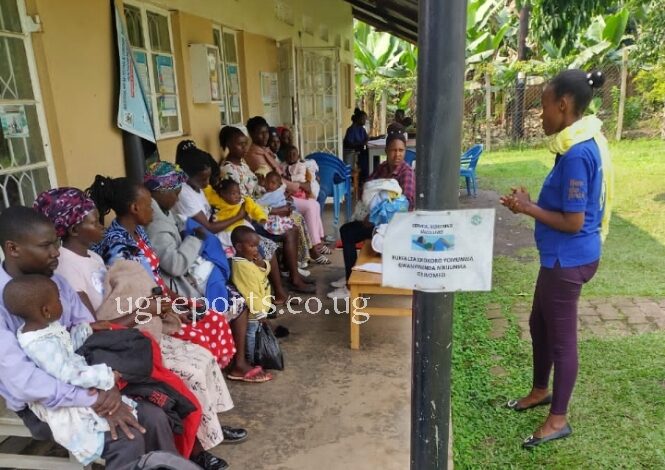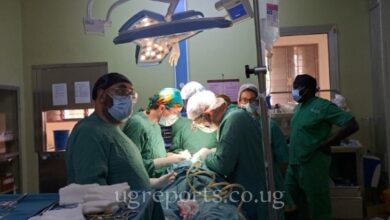Fort Portal takes strides against stunting: Community efforts yield positive results
Children who suffer from growth retardation as a result of poor diets tend to be at risk of illnesses and death.

Fort Portal: In Uganda’s Western region, Fort Portal is making strides in the fight against stunting, Doreen Nasiima writes.
According to recent data from the Uganda Demographic and Health Survey 2016, stunting in Tooro stood at 40.6%, but with a promising step towards a healthier future in 2022 by 2% to 38% of children under five years, 2.6% suffering from wasting, and 10.3 are born with a low birth weight below 2.5 kg.
However, despite this progress, malnutrition remains a pressing concern as it surpasses the national stunting level of 25%, which is lower than Tooro’s stunting rates.
Every month, Fort Portal Regional Referral Hospital receives 60–90 patients struggling with stunting and malnutrition, highlighting the need for sustained efforts, according to Dr. Aggrey Gwayita, a senior nutritionist and incharge of the nutrition department.
Causes
Dr. Gwayita highlights the most common causes of malnutrition in the region to be linked to domestic violence in most families that leave the children without proper care.
“In most families, children are left under the care of their grandmothers and/or housemaids that have no knowledge about diety manners but rather feed them on one type of food like matooke and beans daily,” explains Dr. Gwayita.
He adds that increasing child marriages also contribute a lot to poor feeding manners, where in districts like Bundibugyo, in every 10 mothers that give birth, seven are below the age of 20 years.
Eric Etoba, a nutritionist attached to KRC Uganda, links the high malnutrition rates to food insecurity in most homes, where most depend on agriculture as a main source of income.
“Malnutrition is an ecological problem that does not occur alone but also is accompanied with poverty, disturbed family structure, and ignorance. Lack of awareness of nutritional qualities of food, irrational beliefs about food, and feeding habits lead to undernutrition in families,” Etoba emphasizes.
Etoba further explains that an imbalanced diet and failure to breastfeed babies during their early days, especially in the first 1,000 days, contribute to malnutrition.
Implications of malnutrition
According to Dr. Gwayita, children who suffer from growth retardation as a result of poor diets tend to be at risk of illnesses and death.
“Stunting is a result of long-term nutritional deprivation that delays mental development, poor school performance, and reduces intellectual capacity, thus affecting economic development,” explains Dr. Gwayita.
Dr. Gwayita expresses that childhood obesity leads to a variety of disabilities and diseases, such as diabetes and cardiovascular diseases, mainly heart disease and stroke.
“The risk of most noncommunicable diseases resulging from obesity is partly caused by obesity from birth or during obesity. Children who are obese are likely to suffer from both short-term and long-term health consequences,” emphasizes Dr. Gwayita.
Community-led solutions
The Parish Development Model (PDM) has been instrumental in addressing stunting. Through nutrition-sensitive agriculture initiatives and community-led projects, PDM empowers households to improve nutrition.
PDM is bringing science and business to jointly drive transformation as a key entry point for nutrition interventions, like starting with the seven key PDM enterprise commodities on or off farm.
Asiiimwe emphasizes that the four-acre model is an opportunity for improved household food security and nutrition.
“Through input production and supply like animal feeds, seeds, seedlings, fertilizers, agrochemicals, and irrigation schemes, the rural households contribute to increased production and supply of the nutrition-sensitive value chains through the four-acre model,” explains Asiimwe.
Asiimwe extends that the 24 food value chains can be leveraged on to improve diet diversity for children 6–23 months and women of reproductive age in addition to the household diversity score.
Poverty being the root cause of chronic malnutrition, helping a community generate income is the most useful way to address the problem through female literacy, shares Catherine Kemigabo, the Kabarole district health educator.
“Many income generation programs find it helpful to work with women groups, as the cash earned by women tends to go towards feeding families rather than alcohol or cigarettes,” Kemigabo says.
“We have also considered mass dewarming mostly in schools, which improves nutrition, reduces anemia, and enables children to have more energy,” adds Kemigabo.
Kemigabo says that the prevention of malnutrition is to only eat a healthy, balanced diet by eating a variety of foods from the main food groups, including plenty of fruits and vegetables.
Success stories
Local residents like Olivia Kasemeire, a mother of two from Bukwali parish fort portal city, have benefited from PDM’s initiatives.
“I learned about balanced diets and kitchen gardening from Greeco Organic Farm, a vegetable farmer, and my children’s health has improved significantly,” states Kasemeire.
25 farmers from Kiiko town council in Kabarole district, under their Kiiko young mothers, were concerned to fight malnutrition among themselves by establishing kitchen gardens for diet improvement.
“As young mothers, we no longer need to rely solely on markets for our food because we have gardens in the compounds that enable us to have better control over the diets of our families,” explains Rehema Nabukeera, their chairperson.
Nabukera adds that under their group, they introduced cooking of gradational foods commonly known as Orugali, where they teach different communities on proper food safety and handling for nutritious diets.
To fight malnutrition, the country needs over three trillions (3.28 trillion) for governance, which the government has failed to raise even when little is offered for nutrition through ministries of agriculture and health; planning and budgeting are not accounted for.
The government of Uganda, through the Nutrition Action Plan 2020-2025, targets increasing access to and utilization of nutrition-specific services by children under five years of age, school-aged children, adolescents, pregnant and lactating women, and other vulnerable groups by integrating nutrition services in the prevention,, control, and management of infectious disease, epidemics, and diet-related non-communicable diseases.
Do you have an advertisement or article you want to publish? Mail us at theugreports@gmail.com or WhatsApp +256394700683.






